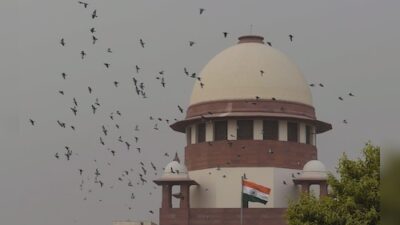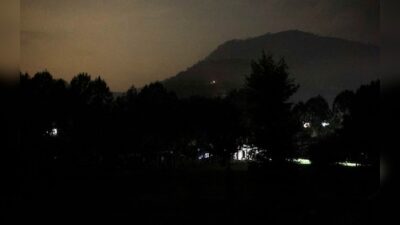The idea of simultaneous elections—where voters cast their votes for both Lok Sabha and State Assemblies on the same day within their constituencies—presents a unified and streamlined electoral process. Even if voting occurs in phases across regions, the primary goal is to align electoral timelines to enhance governance, lessen logistical challenges, and ease the financial and administrative burdens caused by frequent elections.
The 2024 report from the High-Level Committee (HLC) on Simultaneous Elections, chaired by former President Ram Nath Kovind, offers a detailed roadmap for realizing this vision. With the Union Cabinet accepting its recommendations on September 18, 2024, India is now set for a pivotal national discussion on modernizing its democratic processes while preserving federal values.
Historical Context and Disruption
Simultaneous elections have historical precedence, as India held joint elections for the Lok Sabha and State Assemblies from 1951 to 1967. This alignment was disrupted by the early dissolution of some State Assemblies and the Lok Sabha between 1968 and 1971. For instance, the Fifth Lok Sabha was extended during the Emergency, while various assemblies and Parliaments faced either premature dissolutions or delays, resulting in a scattered electoral calendar. What began as a structured approach has devolved into an unpredictable cycle where elections in some state occur almost every year—impacting governance, public expenditure, and national focus.
Key Findings of the High-Level Committee
The HLC conducted extensive consultations to assess the feasibility and desirability of ONOE. Here are some key insights:
-
- Public Sentiment: More than 21,500 citizens provided feedback, with over 80% in favor of simultaneous elections. Responses came from all parts of the nation, indicating a strong desire for reform.
- Political Parties: Among the 47 political parties that responded, 32 supported the proposal, citing benefits such as resource savings, simplified administration, and reduced social tensions. The remaining 15 expressed concerns about potential disadvantages for regional parties and the complexity of synchronizing varied tenures.
- Expert Consultations: Legal experts, former Chief Justices, and prior Election Commissioners largely endorsed ONOE, highlighting the unnecessary costs and disruptions caused by staggered elections.
- Economic Support: Prominent industry bodies—CII, FICCI, and ASSOCHAM—advocated for the reform, contending that ONOE would bolster investor confidence, economic predictability, and stability by minimizing frequent policy interruptions due to election-related Model Codes of Conduct.
- Legal Preparedness: The committee suggested amendments to Articles 82A and 324A of the Constitution to facilitate this reform. It also emphasized the need for synchronizing electoral rolls and voter IDs (EPICs) to prevent duplication and inaccuracies.
- Implementation Strategy: The HLC outlined a two-phased approach—Phase 1 would align the Lok Sabha and State Assembly elections, while Phase 2 would synchronize urban local body and Panchayat elections within a 100-day timeframe.
Why This Reform Matters
The rationale behind ONOE is multifaceted:
-
- Governance First: Regular elections trigger the Model Code of Conduct (MCC), which often halts policy decisions and welfare initiatives. A synchronized election cycle permits continuous governance and policy action.
- Resource Efficiency: The current model consumes immense human and material resources for each election round. Election responsibilities burden civil servants, police, and educators, frequently undermining essential public services.
- Cost Savings: The financial implications of repeated elections are enormous. From printing ballots to deploying security forces and establishing infrastructure, the expenditure runs into thousands of crores. ONOE aims to consolidate these costs.
- Empowering Regional Voices: Contrary to fears of sidelining regional parties, simultaneous elections could amplify local issues by ensuring that State and national matters are addressed concurrently.
- Promoting Political Equity: Simultaneous elections create equal opportunities for leadership emergence at both national and regional scales, decentralizing power within parties and encouraging diverse political involvement.
Challenges and the Way Forward
The implementation of ONOE comes with its own set of challenges. Constitutional amendments must achieve consensus from both Parliament houses and at least half of the states. Administrative capabilities will require enhancement to manage the logistical demands of simultaneous voting. The Election Commission will need advanced technologies, improved training frameworks, and refined coordination systems.
Nonetheless, these obstacles are not insurmountable. With political commitment, institutional collaboration, and public backing, ONOE can shift from being a mere aspiration to a tangible reality. The phased model suggested by the HLC offers a practical pathway, allowing for gradual adaptation rather than a sudden overhaul.
Conclusion: A Reform Whose Time Has Come
India’s electoral dynamism stands as a global exemplar. Yet, every system must evolve. As our democracy matures, it should prioritize not just participation, but also performance and precision. The One Nation, One Election initiative is not a shortcut—it represents a strategic restructuring designed to elevate efficiency, governance, and the depth of democracy.
The High-Level Committee’s report provides a solid foundation. The responsibility now lies with Parliament, state legislatures, and the citizens of India. This is a moment to elevate our electoral process, aligning it with the scale and ambitions of the world’s largest democracy. It is time to prioritize governance, lessen electoral fatigue, and create a future where democracy operates consistently, rather than cyclically.
Let this be the century in which Indian democracy transitions from frequent to focused—where every vote holds significance not just once, but with enduring impact.
—The author, Rekha Sharma, is a Member of Parliament, Rajya Sabha. The views expressed are personal.



